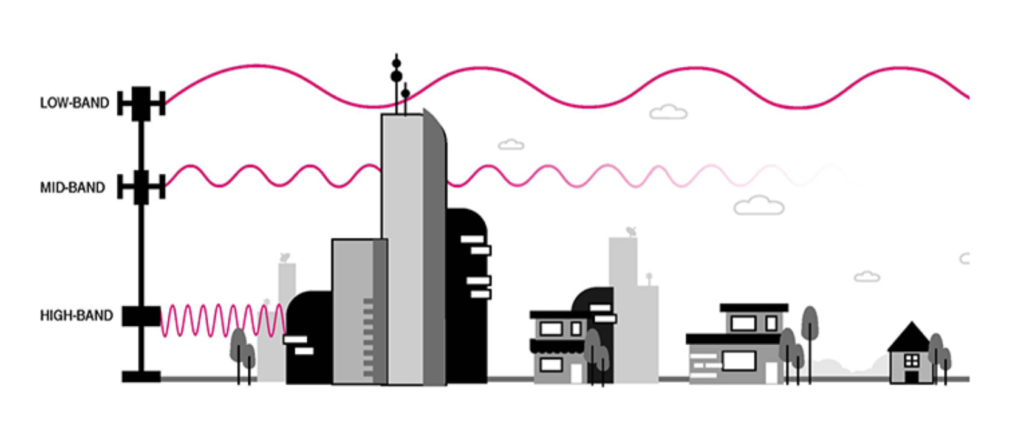With the growing 5G coverage and release of more 5G modems on the router market, we thought it would be nice to ring in the new year with some facts about 5G frequency bands.
- Low-band 5G operates between 600-850 MHz. This is similar to what 4G networks currently use and is only moderately faster than 4G, between 50-250 Mbps offering similar coverage areas for each cell tower. Not all cities and regional operators are deploying low-band 5G towers; some are opting to start with mid-band towers. Even so, it’s possible for a 5G device to connect to a low-band 5G network and achieve speeds similar to 4G/LTE.
- Mid-band 5G operates in the 2.5-3.7 GHz range and delivers speeds between 100-900 Mbps. While offering less range per cell tower, this type of 5G is going to be the most common implementation of 5G networks for many years to come. It’s a reasonable compromise between network speed and range in both medium-density urban areas and less dense rural regions.
- High-band 5G is the band that is most commonly associated with 5G. Operating at 25-39 GHz, this is known as the “millimeter wave” spectrum and delivers gigabit speeds (some tests have shown as high as 3 Gbps). The tradeoff is that millimeter wave transmitters have very limited range and require the deployment of many small transmitters, so it’s only viable in urban areas where transmitters can be near closely spaced homes and buildings.
- ISM Band (Industrial, Scientific and Medical band) This is not usually discussed, but it is a part of the radio spectrum that can be used for any purpose without a license in most countries. In the US, the 902-928 MHz, 2.4 GHz and 5.7-5.8 GHz bands were initially used for machines that emitted radio frequencies, such as RF welders, industrial heaters and microwave ovens, but not for radio communications. In 1985, the FCC Rules (Part 15.247) opened up the ISM bands for wireless LANs and mobile communications. In 1997, it added additional bands in the 5 GHz range under Part 15.407, known as the Unlicensed National Information Infrastructure (U-NII). Europe’s HIPERLAN wireless LANs use the same 5 GHz bands, which are titled the “Broadband Radio Access Network.” Numerous applications use the ISM/U-NII bands, including cordless phones, wireless garage door openers, wireless microphones, vehicle tracking and amateur radio.


